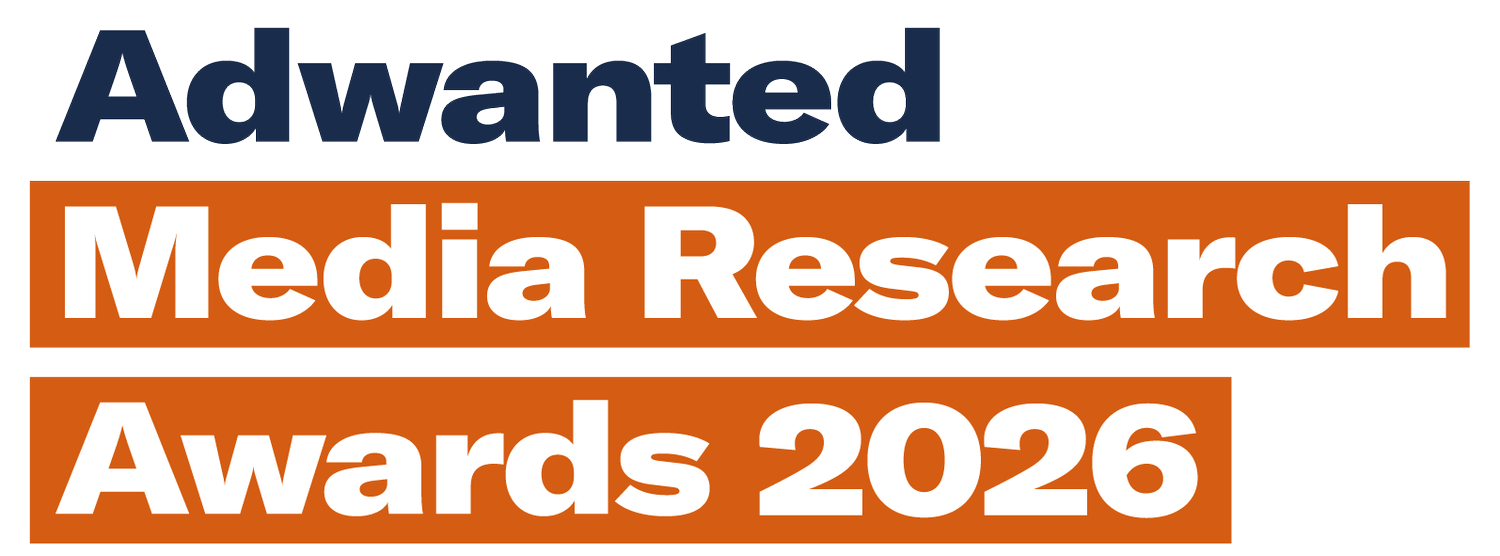Judges
Denise Turner, Research Director at the IPA, was our head judge for the 2026 Adwanted Media Research Awards. All of us at Adwanted are still reeling from the devastating news of Denise Turner's passing. We will not be replacing her this year and judging of the entries will go ahead with our brilliant panel of judges
Each individual judge brings their own industry expertise and unique take on the media research market, covering media agencies, media owners, marketing bodies, tech companies, advertisers and independent consultants.
Laura Rowe
Board Director and Managing Partner,
Head of Decisions Science, OMD
James Longhurst
Content Director,
The Media Leader
Tony Regan
Partner,
Work Research
Anna Cremin
Head of Research and Consumer Insight, Pearl & Dean
Director of ITV Insights Group,
ITV
Neil Mortensen
John Carroll
Director of Research and Audiences,
RAJAR
Euan Mackay
CEO,
Route Research
Matt Hill
Director of Insight & Research,
Sky Media
Donna Burns
Head of Insight,
Radiocentre
Kathryn Saxon
Head of Audience Intelligence,
Wavemaker
Tara Watkins
Head of Insights,
the7stars
Emily Alcorn
Chief Effectiveness Officer,
Talon
Sumran Kaul
Consultant
Heather Dansie
Research and Insight Director,
Newsworks
Seven top tips from the judges
Use your words wisely and keep to the point
Most categories have three entry fields totalling 1300 words maximum. Avoid pasting in sales jargon. Describing the awesomeness of your client or repeating the mission statement from your website isn’t needed. Please stick within the word count for each section (as per the entry guidelines). The judges will always look kindly on those keeping to the rules!
Make sure the narrative for your whole paper is pegged back to the business challenge and a clear set of research objectives. Ensure that your conclusions and any ROI analysis demonstrates the contribution to the business challenge. It is always a good idea to review your entry for clarity and narrative flow. Your paper will have a better chance of standing out if it is easy to read and understand. After all everyone loves a story.Show as well as tell
The entry form has a field at the bottom that allows you to attach documents. Even better, provide web links to relevant documents or images. The word count for entries is strict but we do encourage entrants to actually show us the work they did, or to provide any relevant links. We were surprised that a few entries in previous years left the judges to resort to googling to actually find the ad campaign or research findings that they were describing. After all a picture paints a thousand words.Typos and grammar do matter
Yes, we live in a world of social media shortcuts and autocorrect, but misspellings and 100 word sentences do stand out and can disfigure an entry. Give the entry a final read through before entering, or ideally get someone else to check through it as well.Nobody’s perfect
The judges work in the real world and know that research projects can have a long and troubled route to success. Don’t be scared to discuss any unexpected issues that you had to overcome. Did the project tell you anything that you weren’t expecting or have any unexpected consequences? Don’t be afraid to include some lessons learned for next time.Don’t forget the research bit!
In the rush to discuss the results of the project and the happiness of the client, the research methodology can sometimes get overlooked.
- OK, so you did online interviews, but with what sample, with what methodology and what were the likely effects on the results? How have you mitigated against that in your methodology and your analysis?
- If there was an increase in sales, how did you isolate external effects?
- If you are using econometrics, modelling and algorithms, explain how the econometrics is designed to emulate real behaviours and include how you validated the model. The judges are research professionals, so don’t be afraid to get technical, or refer us to separate technical documents. Work with your research agency to help you explain the methodological and analysis challenges. These are, after all, research awards.Think laterally
You can be environmentally friendly and enter the same project for more than one category, but only if it ‘fits’. For example, the Representation of Data category isn’t just for expensive infographics, brochures and videos, it is also about well thought through presentation decks or different ways that are used to bring data to life. So the survey or project you are describing in another category could also be relevant to enter in this category. If you do enter across categories, then please do be careful to tailor your entry to that category to make it relevant.The human touch
Where possible and appropriate, bring your story to life with a real case study demonstrating how the research was applied to a client’s campaign or pitch. The judges will be looking for something that stands out, entries that capture their imagination when they get together to discuss the shortlist. Entries that are more obviously written by human beings, that excite judges faced with numerous entries to read, will be more successful than slick marketing pieces.















